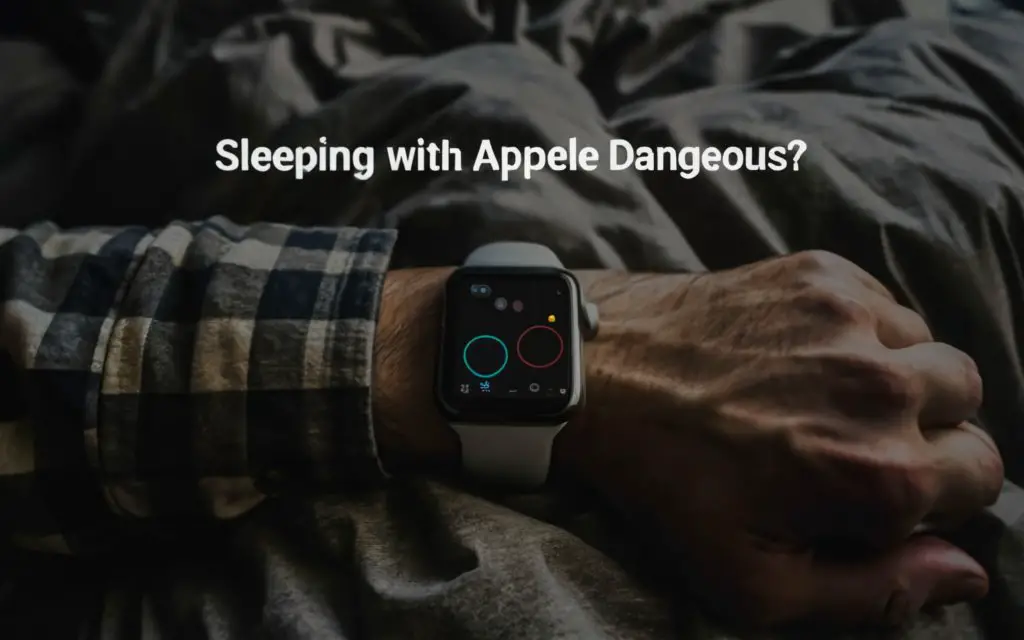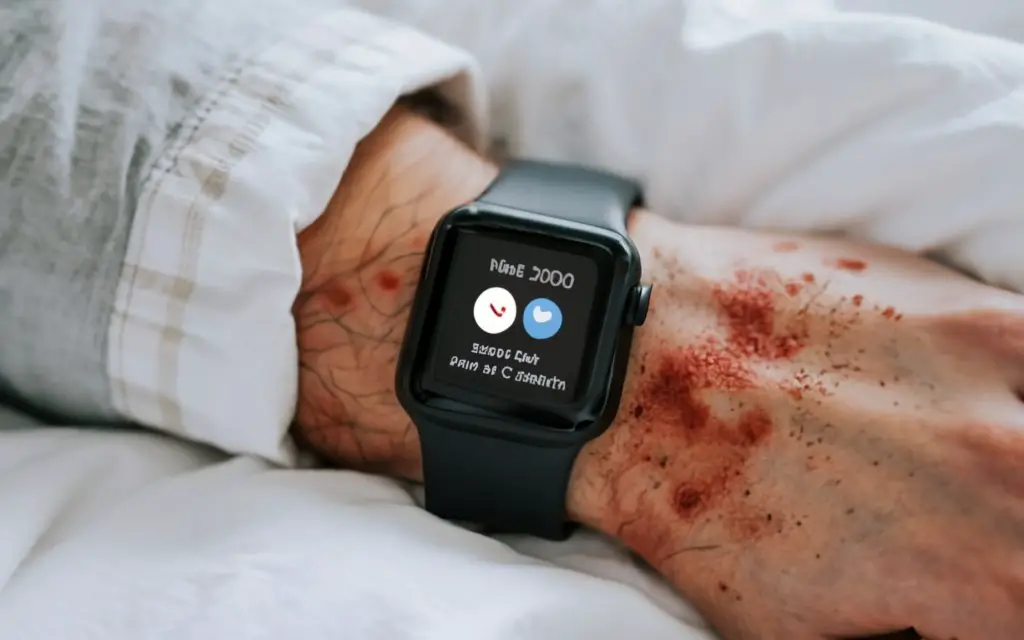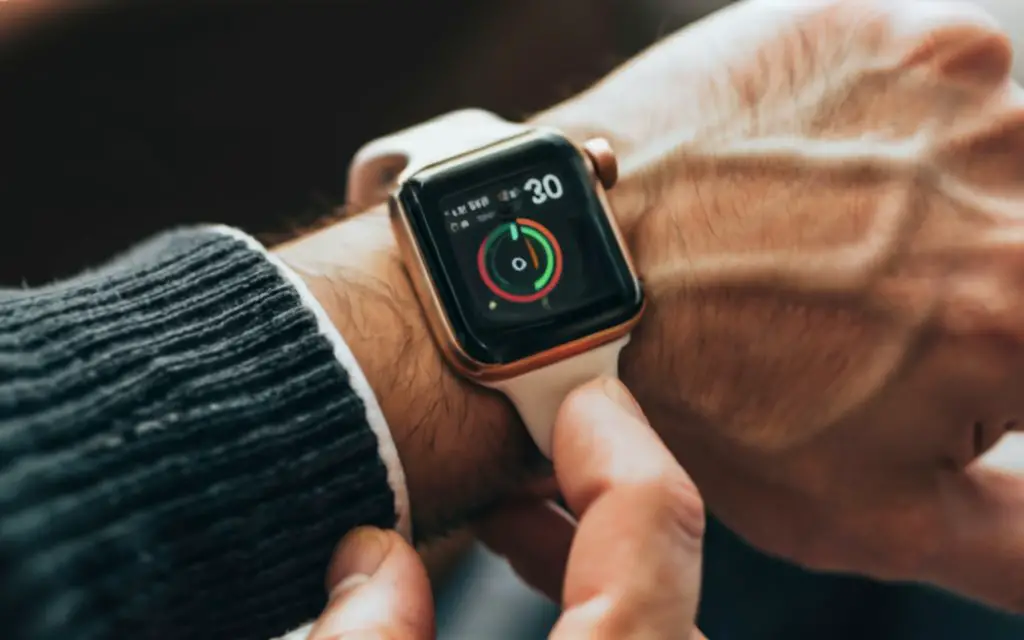Sleeping with an Apple Watch is generally considered safe. It poses no significant health risks to users.
Many individuals rely on wearable technology to monitor their sleep patterns, and the Apple Watch is a popular choice for this purpose. Its design caters to round-the-clock wear, including features such as sleep tracking and heart rate monitoring that encourage overnight use.
With a focus on convenience and health monitoring, an Apple Watch utilizes low-power Bluetooth technology to communicate with connected devices, reducing any concerns about radiation exposure. Users value the insights into sleep quality and habits, which can contribute to healthier lifestyle choices. Despite this comfort in usage, it is indispensable for users to follow the manufacturer’s guidelines to ensure safety and to be aware of any personal sensitivities or allergies to the materials used in the watch bands.

Hazards Of Sleeping With An Apple Watch
Many users enjoy wearing their Apple Watch day and night. But, could this practice pose risks? Let’s explore the possible hazards tied to wearing this device while sleeping.
Radiation Exposure Concerns
Electronic devices emit low levels of radiation.
With an Apple Watch, the concern is close proximity to the skin for extended hours.
This extended exposure during sleep has sparked discussions about potential health impacts.
- Electromagnetic fields (EMF) from devices can be of concern.
- Experts suggest minimal EMF exposure while sleeping.
- Apple Watches use Bluetooth, which emits low-power EMF.
Yet, the scientific community has not reached a consensus on the long-term effects of such radiation, especially from wearable tech. Understanding the exact implications requires further research.
Potential Skin Irritation
Continuous wear of any device may lead to skin issues.
Apple Watch straps may cause sweat accumulation or friction.
This situation can lead to irritation or allergic reactions, particularly for sensitive skin. Here are signs to watch for:
| Sign | Description |
|---|---|
| Redness | A visible sign of irritation |
| Rash | Patches that may itch or burn |
| Dryness | Skin dehydration that feels rough to touch |
To minimize risks, it’s important to:
- Clean the watch and strap regularly.
- Ensure the strap is dry and not too tight.
- Take breaks from wearing the watch.
Paying attention to these details can help prevent unwanted skin complications.

Battery And Charging Safety
Many people sleep with their smart devices nearby. But is sleeping with your Apple Watch safe? Let’s inspect the battery and charging safety aspects.
Overheating Risks
Smart watches, like any electronic device, can get warm. Charging generates heat. This heat can build up during the night. It’s important to ensure proper ventilation to avoid overheating. Preventing overheating is simple:
- Use only Apple-approved chargers
- Charge in a cool, dry place
- Avoid covering the watch while charging
Wearable Battery Malfunctions
Every battery in a wearable is subject to wear and tear. Apple Watch is no exception. Faulty batteries can cause issues:
| Issue | Sign | Action |
|---|---|---|
| Swelling | Screen lifting | Contact Apple Support |
| Not holding charge | Quick battery drain | Test battery health |
| Overheating | Too hot to touch | Stop using immediately |
Keep your device’s software up to date. This ensures optimum battery performance and safety.
Balanced Approach To Wearable Tech At Night
As we tuck ourselves in for the night, the thought of sleeping with our gadgets may spark a debate. A balanced approach to wearable tech, like an Apple Watch, means using it smartly. It is crucial to understand how to harmonize the benefits with our need for restful sleep.
Strategies For Safer Usage
- Enable ‘Do Not Disturb’: Cut down on after-hours notifications to limit disturbances.
- Set a sleep schedule: Let your watch remind you when it’s time to wind down.
- Monitor battery charging: Avoid overnight charging when possible to reduce exposure to electricity.
- Wear comfortably: Adjust straps so the watch is not too tight, ensuring proper circulation.
Technology-free Sleep Alternatives
Embrace routines that support a tech-free bedroom:
- Read a physical book to relax your eyes before sleep.
- Practice meditation or deep breathing to calm your mind.
- Use a traditional alarm clock instead of a device.
- Write in a sleep journal to clear your thoughts.
Frequently Asked Questions Of Is Sleeping With An Apple Watch Dangerous?
Can Wearing An Apple Watch To Bed Harm You?
Wearing an Apple Watch to bed is generally safe. It emits low-level radiation, similar to other consumer electronics. However, it poses minimal health risk according to current scientific data. It’s designed for continuous wear, including during sleep for sleep tracking.
Are There Any Risks With Apple Watch’s Radiation?
The levels of radiation emitted by an Apple Watch are within international safety standards for electronic devices. These levels are considered too low to cause harm to humans on a short-term basis. Long-term effects are still being studied, but no significant risks have been confirmed.
What Are The Benefits Of Sleeping With An Apple Watch?
Sleeping with an Apple Watch can track your sleep patterns, providing insights into your sleep quality. It can monitor heart rate and detect disturbances, potentially identifying health issues early. It also offers convenience, such as silent alarms to wake you up without disturbing others.
Can An Apple Watch Disrupt Your Sleep?
An Apple Watch can potentially disrupt sleep if notifications are not managed, as alerts or vibrations may wake you. To prevent disruptions, use features such as Do Not Disturb or Sleep Mode, which limit notifications during set sleep hours.
Conclusion
Wrapping up, the fears around wearing an Apple Watch to bed can generally be put to rest. Research indicates minimal risk, emphasizing a balance between tech use and your well-being. Stay informed on wearable tech guidelines, prioritize comfort, and consult professionals for personal concerns.
Rest easy, knowing safety meets convenience on your wrist.





Leave a Reply